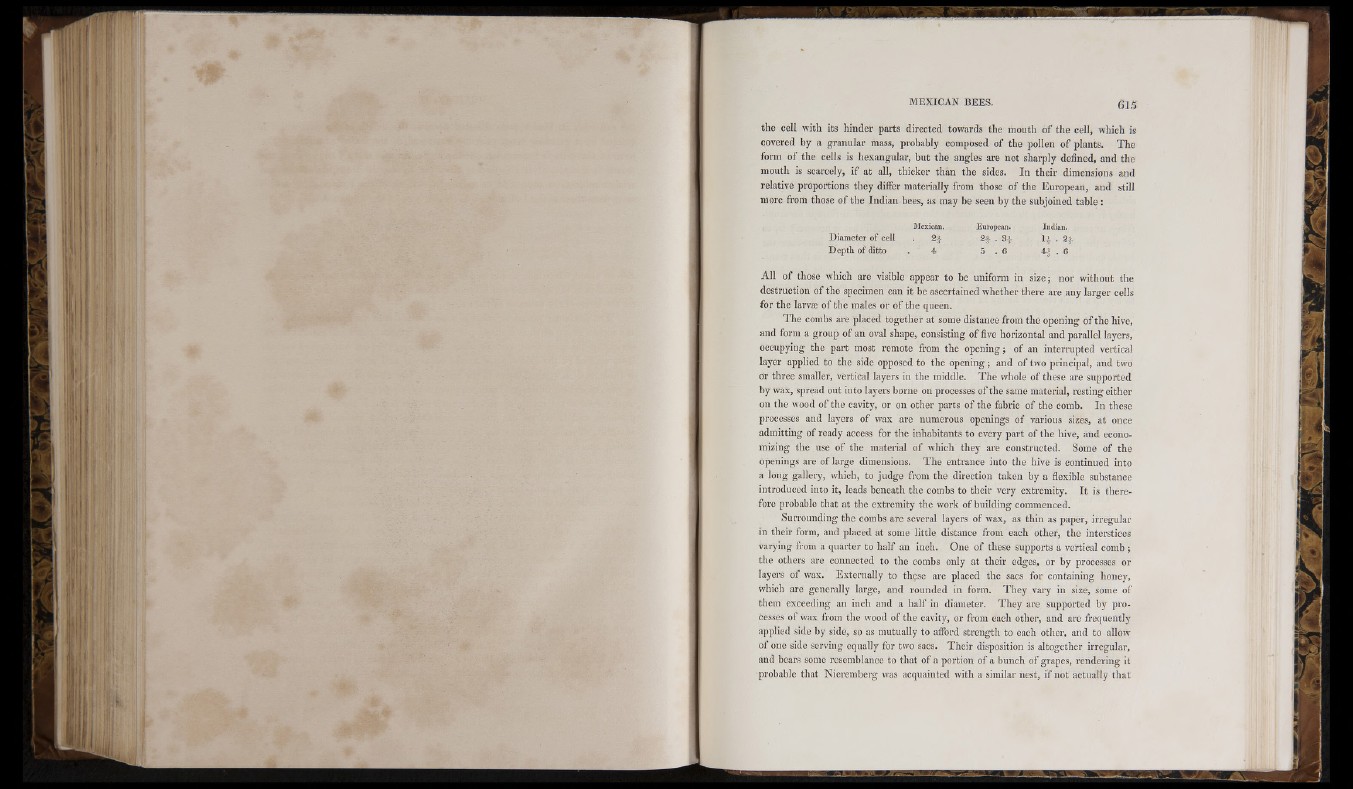
i . :
:‘íi
toi;''
I! iiil!
l i Lto
: : j ;
the cell with its hinder parts directed towards the mouth of the cell, which is
covered by a granular mass, probably composed of the pollen of plants. The
form of the cells is liexangular, but the angles are not sharply defined, and the
mouth is scarcely, if at all, thicker than the sides. In their dimensions and
relative proportions they differ materially from those of the European, and still
more from those of the Indian bees, as may be seen by the subjoined table :
Diam e te r o f cell
D e p th of ditto
Mexican.
• 2}
European. Indian.
S f . 3j- U .
5 . 6 4 -j . 6
All of those which are visible appear to be uniform in size; nor without the
destruction of the specimen can it be ascertained whether there are any larger cells
for the larv® of the males or of the queen.
The combs are placed together at some distance from the opening of the hive,
and form a group of an oval shape, consisting of five horizontal and parallel layers,
occupying the part most remote from the opening; of an interrupted vertical
layer applied to the side opposed to the opening; and of two principal, and two
Or three smaller, vertical layers in the middle. The whole of these are supported
by wax, spread out into layers borne on processes of the same material, resting either
on the wood of the cavity, or on other parts of the fabric of the comb. In these
processes and layers of wax are numerous openings of various sizes, at once
admitting of ready access for tlie inhabitants to every part of the hive, and economizing
the use of the material of whicli they are constructed. Some of the
openings are of large dimensions. The entrance into the hive is continued into
a long gallery, which, to judge from the direction taken by a flexible substance
introduced into it, leads beneath the combs to their very extremity. It is therefore
probable that at the extremity the work of building commenced.
Surrounding the combs are several layers of wax, as thin as paper, irregular
in their form, and placed at some little distance from each other, the interstices
varying from a quarter to half an inch. One of these supports a vertical comb ;
the others are connected to the combs only at their edges, or by processes or
layers of wax. Externally to these are placed the sacs for containing honey,
which are generally large, and rounded in form. They vary in size, some of
them exceeding an inch and a half in diameter. They arc supported by processes
of wax from tlie wood of the cavity, or from each other, and are frequently
applied side by side, so as mutually to afford strength to each oilier, and to allow
of one side serving equally for two sacs. Their disposition is altogether irregular,
and bears some resemblance to that of a portion of a bunch of grapes, rendering it
•probable tliat Nieremberg was acquainted with a similar nest, if not actually that